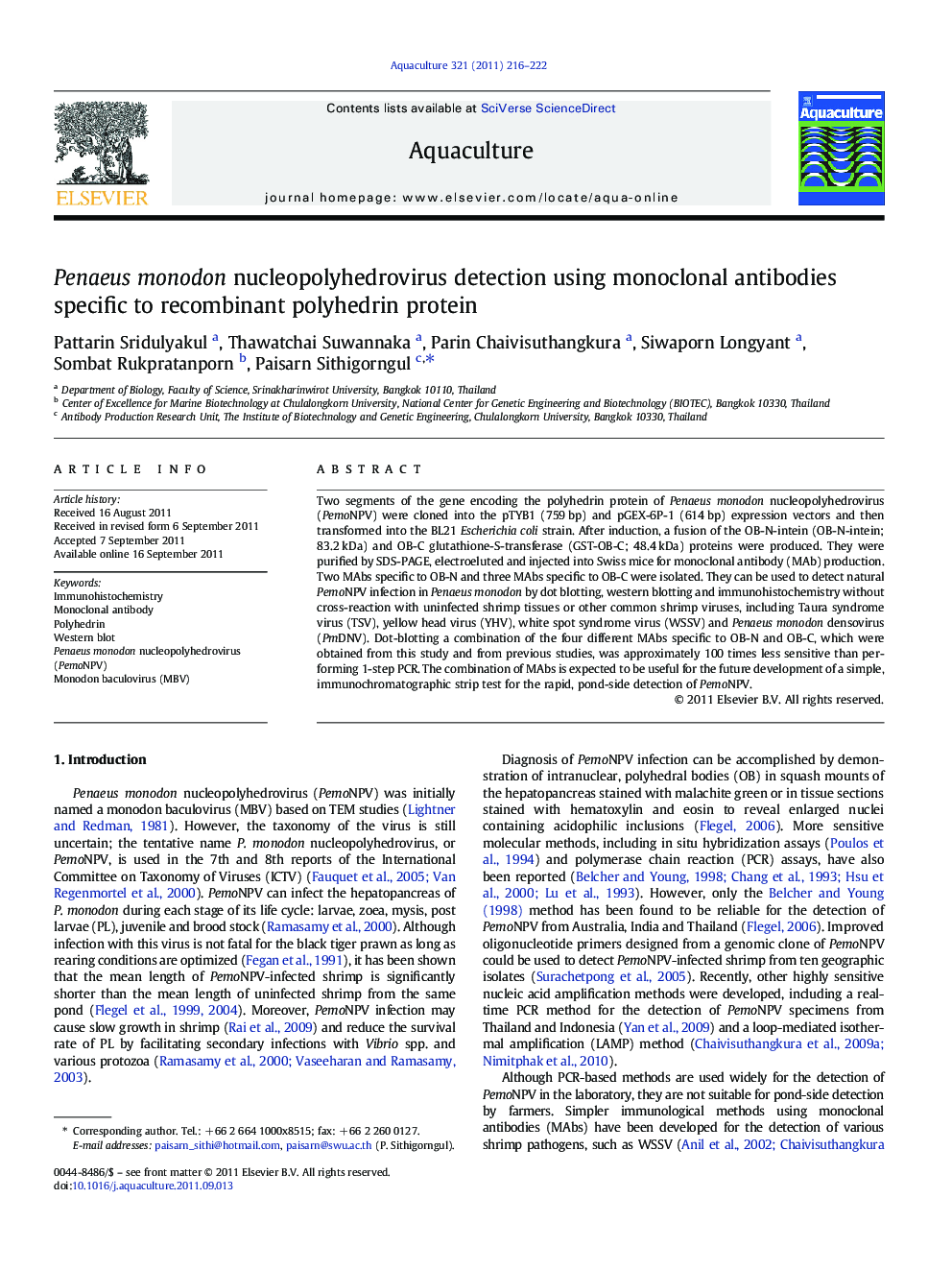| Article ID | Journal | Published Year | Pages | File Type |
|---|---|---|---|---|
| 2422846 | Aquaculture | 2011 | 7 Pages |
Two segments of the gene encoding the polyhedrin protein of Penaeus monodon nucleopolyhedrovirus (PemoNPV) were cloned into the pTYB1 (759 bp) and pGEX-6P-1 (614 bp) expression vectors and then transformed into the BL21 Escherichia coli strain. After induction, a fusion of the OB-N-intein (OB-N-intein; 83.2 kDa) and OB-C glutathione-S-transferase (GST-OB-C; 48.4 kDa) proteins were produced. They were purified by SDS-PAGE, electroeluted and injected into Swiss mice for monoclonal antibody (MAb) production. Two MAbs specific to OB-N and three MAbs specific to OB-C were isolated. They can be used to detect natural PemoNPV infection in Penaeus monodon by dot blotting, western blotting and immunohistochemistry without cross-reaction with uninfected shrimp tissues or other common shrimp viruses, including Taura syndrome virus (TSV), yellow head virus (YHV), white spot syndrome virus (WSSV) and Penaeus monodon densovirus (PmDNV). Dot-blotting a combination of the four different MAbs specific to OB-N and OB-C, which were obtained from this study and from previous studies, was approximately 100 times less sensitive than performing 1-step PCR. The combination of MAbs is expected to be useful for the future development of a simple, immunochromatographic strip test for the rapid, pond-side detection of PemoNPV.
► MAbs specific to two fragments of recombinant polyhedrin of PemoNPV were produced. ► They can be used to detect natural PemoNPV infection by various immuno-assays. ► These included dot blotting, Western blotting and immunohistochemistry. ► The detection limit by dot blotting was about 100 times less than that of 1-step PCR. ► MAbs targeted to different epitopes can be combined for producing of a strip test.
